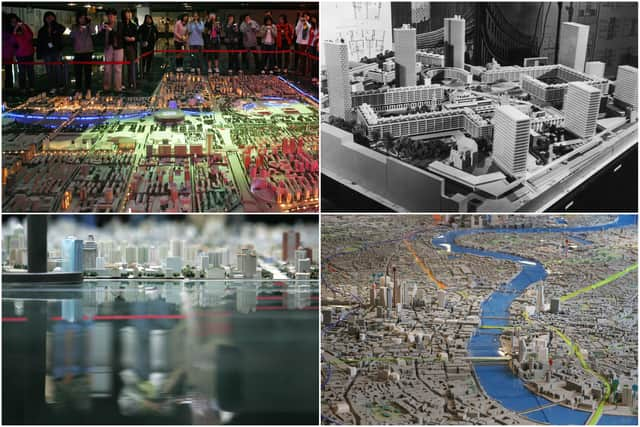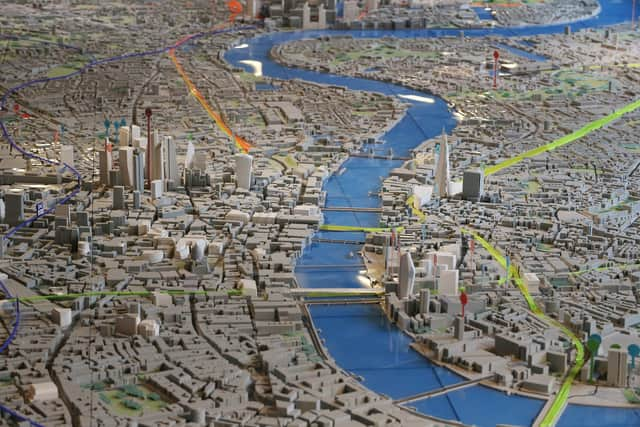What is a 15 minute city? Meaning of concept explained, conspiracy theories - and will they come to the UK?
This article contains affiliate links. We may earn a small commission on items purchased through this article, but that does not affect our editorial judgement.
and live on Freeview channel 276
In recent weeks, the concept of a “15-minute city” has gained ground once again, with a number of local authorities revealing plans to implement such a model in their regions.
A 15-minute city is a city that is designed in such a way that places local amenities - such as work, shopping, education, healthcare, and leisure - within 15 minute’s reach of every resident, without the use of a car. In a 15-minute city, reaching these amenities within a quarter of an hour should be possible by either walking, using public transport services, cycling, or scooting.
Advertisement
Hide AdAdvertisement
Hide AdBut what exactly are the benefits of implementing such a concept, and why are some people set against the idea?
What are the benefits?
There are a number of reasons for doing this. At a base level, having shops and services within easy reach of residents is an obvious perk to quality of life. But such cities are thought to also tackle the challenges of the climate emergency by reducing the need for residents to use their cars, which also eases traffic congestion.
Putting everybody within the same, easily achieved distance of local amenities also helps to shrink growing inequalities between those in better or worse off areas, and encouraging walking or cycling over driving will lead to a healthier population.
Within 15-minute cities, there is also a large focus on access to green space, which may promote positive environmental impacts such as increasing urban biodiversity and helping to protect the city from invasive species. Of course, studies have also found that increased access to green spaces can also have a positive impact on the mental and physical health of a city’s inhabitants.
Advertisement
Hide AdAdvertisement
Hide AdThe 15-minute city concept is not an entirely new one, but the ongoing climate crisis and global Covid-19 pandemic have prompted a heightened focus on it after successful plans were implemented in cities like Milan, Madrid, Edinburgh, and Seattle after Covid outbreaks.


How are 15-minute cities achieved?
Implementing the 15-minute city concept requires a multi-disciplinary approach, involving transport planning, redesigning existing public spaces or creating new ones, and supporting mixed-use developments, which may have retail units and offices intertwined with residential spaces.
In the Midlands, Transport for West Midlands (TfWM) recently unveiled radical plans to reduce the need for car ownership in the region as part of a £1.3 billion investment programme, with emerging technology and innovations playing a large part in the delivery of the plans.
These include an on-demand bus service currently being trialled in Coventry, where buses are freed from set routes and timetables and can be booked by people over the phone or through an app. Smart travel apps are also a key part of the plan – coordinating transport options and finding the lowest fares - as well as shared transport, such as hire bikes and e-scooters.


Advertisement
Hide AdAdvertisement
Hide AdA 15-minute city may not have a ‘traditional’ town centre with its amenities focused towards the middle, but instead be made up of smaller, “five-minute neighbourhoods”. These “polycentric” models could encourage community ties, and lead to overlooked satellite towns becoming more vibrant and active.
In theory, should you need to travel further than 15 minutes away, that would be made easier due to a general lessening of traffic on the roads - TfWM are also planning for regional facilities and workplaces to be within a 45-minute journey time either by public or shared transport.
Are there potential downsides?
While the benefits of 15-minute cities seem obvious, critics of the concept have pointed out a number of drawbacks.
For one, it can prove difficult (and extremely costly) to implement in established urban areas where infrastructure is already in place, and may not be feasible in areas with low population density or in communities where transportation options are already limited.
Advertisement
Hide AdAdvertisement
Hide AdExperts have also said that the creation of dense, walkable urban cores often leads to gentrification or displacement of lower-income residents to outlying neighbourhoods due to rising property values, with such price increases harmful to marginalised groups, forcing move-outs.
Conspiracy theories about 15-minute cities
There have also been some wild, unfounded claims about 15-minute cities, such as the conspiracy theory that residents would be fined for leaving their assigned neighbourhood. This is, of course, not the case, and while such settlements would be designed to encourage use of local amenities, travelling to use services further afield would not be banned.
It’s been said that such theories have sprung up in part because the concept of a 15-minute city is hard to define in a concise way, and that a new, clearer term to communicate the concept should be used.
What that could be remains to be seen, but while one person might hear ‘15-minute city’ and think of the benefits of localised infrastructure, to another person it might sound like the first step towards a totalitarian, dystopian nightmare granting local authorities more power to rule over their residents.
Advertisement
Hide AdAdvertisement
Hide AdOn 9 February, Doncaster MP Nick Fletcher shared his speech in Parliament criticising the policy being adopted by local councils across the country, calling 15-minute cities an “international socialist concept”.
Citing the South Yorkshire Mayoral Combined Authority (SYMCA), which in Sheffield recently followed other areas of the country in the creation of an Ultra Low Emission Zone - where citizens in vehicles above a certain value must pay to drive through certain areas in an attempt to lower CO2 emissions - Fletcher claimed “ultra-low emission zones in their present form do untold economic damage to any city.”
He added: “The second step after these zones will take away personal freedoms as well. Sheffield is already on its journey and I do not want Doncaster... to do the same. Low emission zones cost the taxpayer money, simple as. However, 15-minute cities will cost us our personal freedom, and that cannot be right.”
In response, many claimed that the concept was simply “mundane” and said that those sparking fear were conspiracy theorists. Oliver Wainwright, writing for The Guardian, said: “Rarely has Parliament descended into parody as far as it did last week, when the Conservative MP for the South Yorkshire constituency of Don Valley, Nick Fletcher, launched a plucky tirade against the concept of convenient, walkable neighbourhoods.”
Comment Guidelines
National World encourages reader discussion on our stories. User feedback, insights and back-and-forth exchanges add a rich layer of context to reporting. Please review our Community Guidelines before commenting.
